

While they may look the same, goat’s milk formula gains the upper hand over other dairy-based infant formulas when it comes to natural nutrition as it is a nutrient-dense food (providing more nutrition without having to drink a lot of it). A particular amino acid, Taurine, is especially rich in goat’s milk, amounting to 20 times more than that of cow’s milk.1
Say goodbye to tummy troubles in toddlers
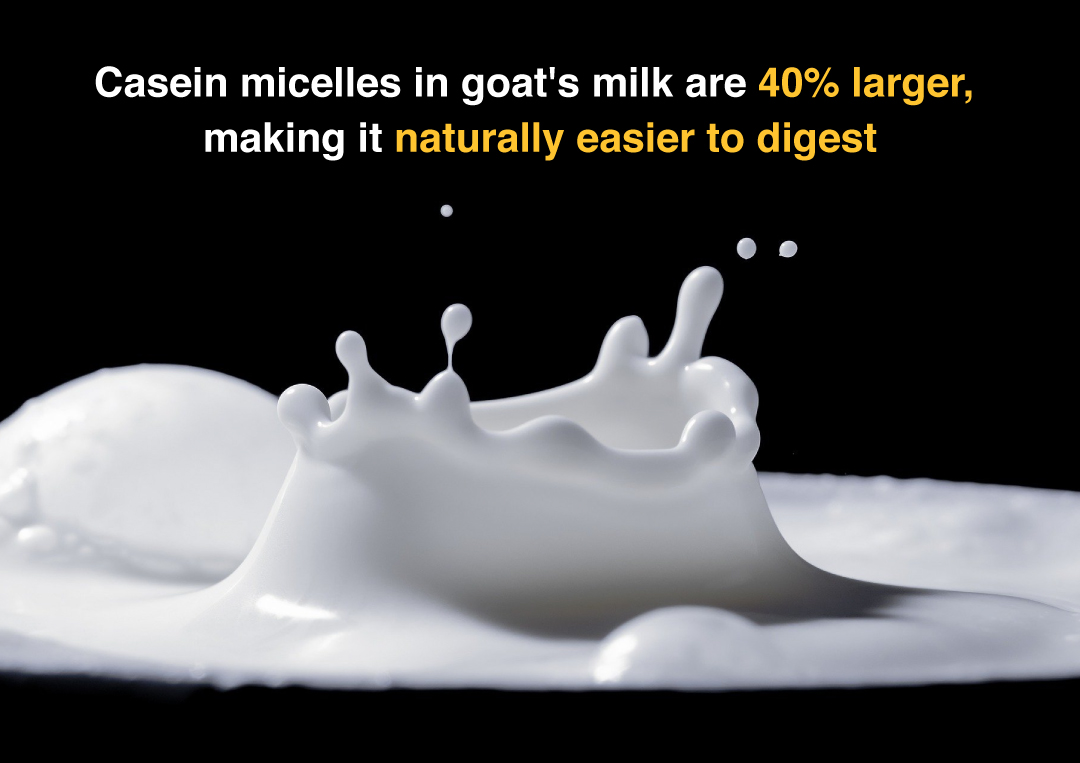
This gives goat’s milk formula a digestive edge over other dairy-based formulas. Milk allergy is often triggered by the presence of allergenic casein protein, ∝s1-casein, and goat’s milk is known to be ‘gentler on the tummy’ as it naturally contains lower levels of ∝s1-casein.
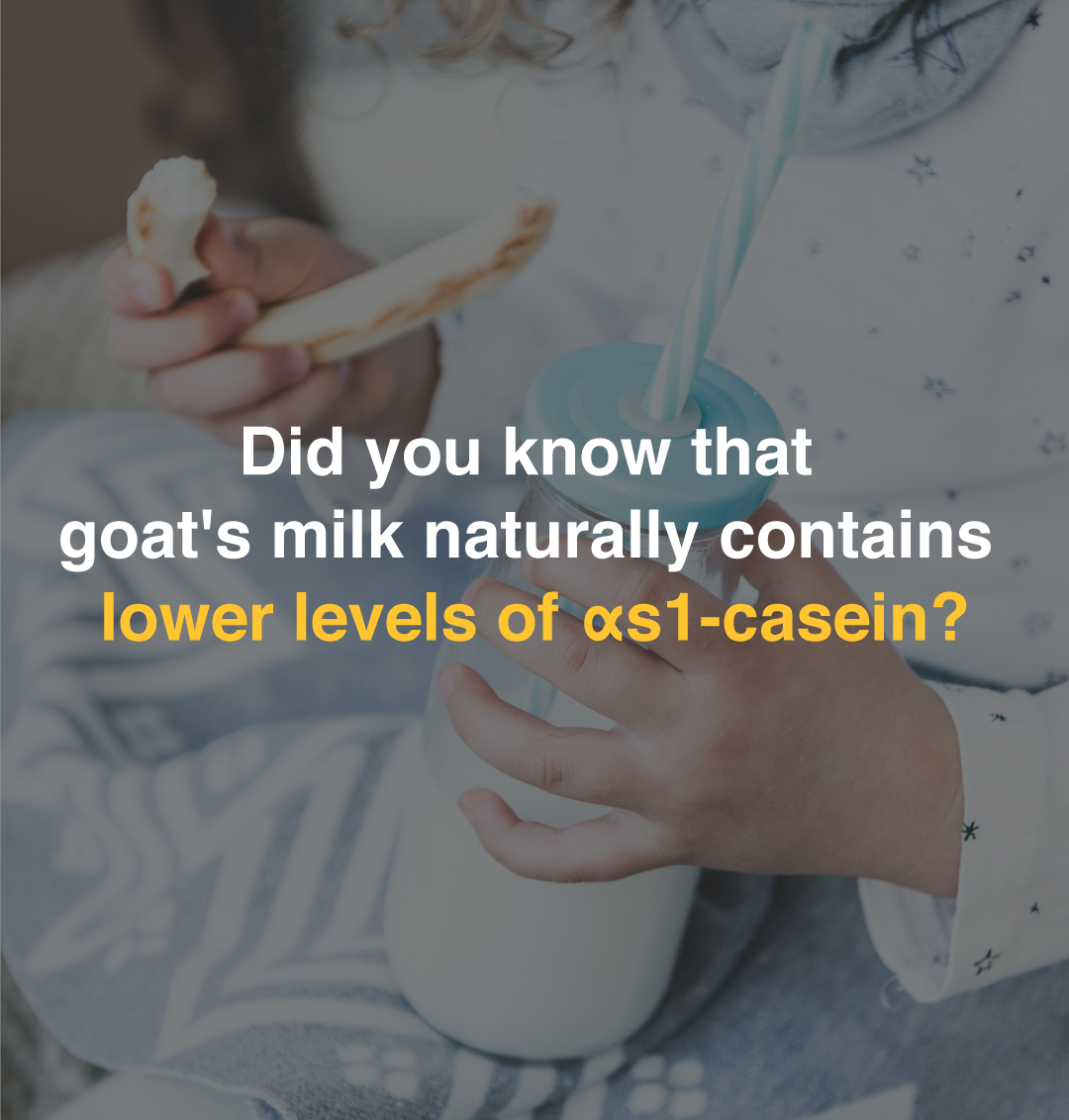
This unique property in goat’s milk is the secret to being naturally easier to digest. Since the casein micelles in goat’s milk are 40% larger than those from cow’s milk, it creates more porous curds for the digestive enzymes to aid in more efficient digestion of goat’s milk protein.2
Boosting iron absorption in children
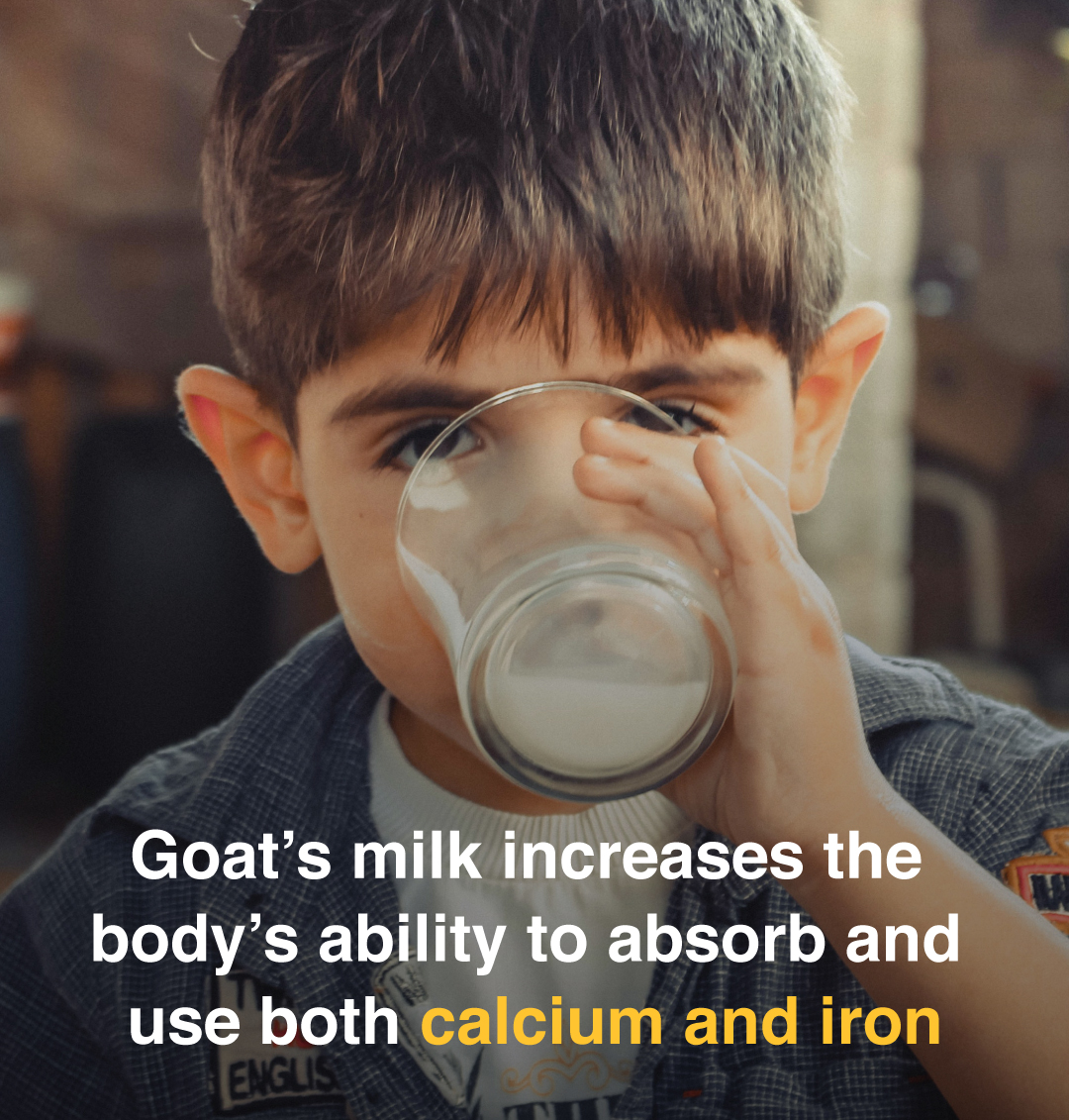
Iron is a key nutrient that is essential for toddlers and children to support their rapid growth and brain development. All babies have enough iron stored in their bodies to last for the first six months. Beyond that, an adequate supply of iron is required which cannot be obtained from breast milk alone, and the AAP recommends iron-fortified infant formulas for all infants who are not breastfed or who are partially breastfed up to the age of 1.3
Goat’s milk formula is the preferred choice for children as it is rich in iron bioavailability– meaning it can be absorbed and utilised by the body. A research study in the Journal of Dairy Science found that not only does goat’s milk enhances iron absorption, but it also does this better and faster than cow milk.4
Worth the price point
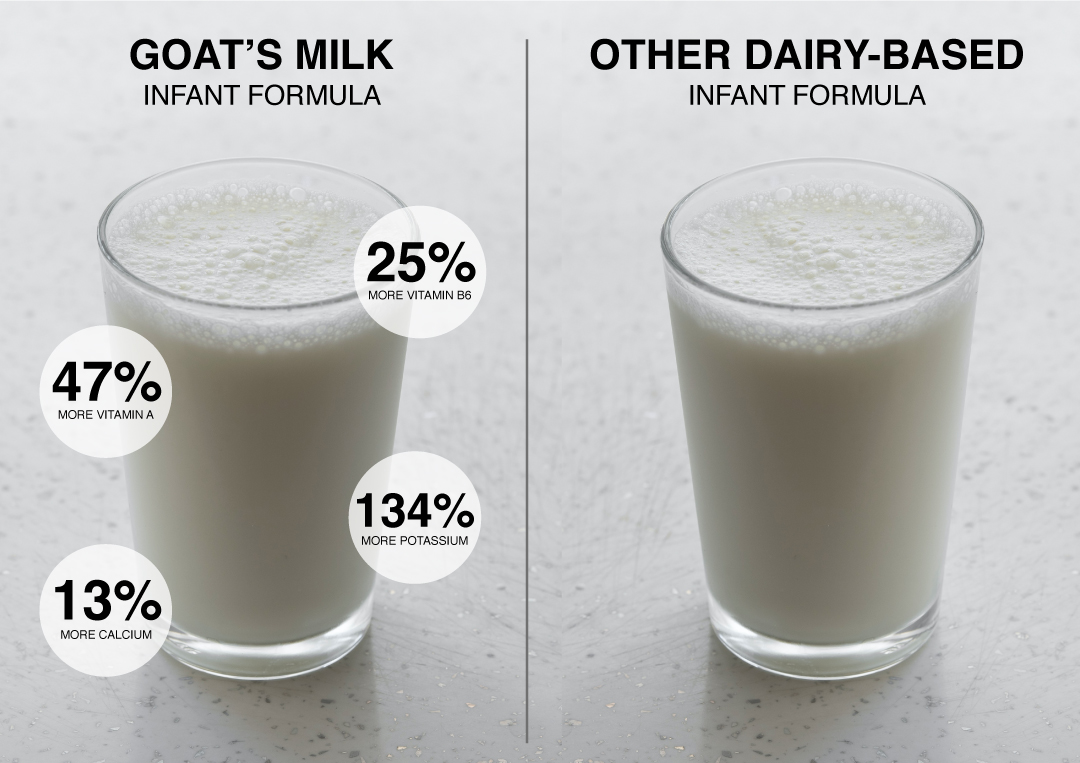
While the price range for goat’s milk may be higher than other dairy-based infant formula, it could be worth it to fork out a little extra money for the benefits it provides. Being a nutrient-dense food, children do not need to consume a lot of it to meet their daily nutrient requirements. Goat’s milk also contains three times more bio-actives than cow’s milk, reducing the need to add synthetic supplementation.
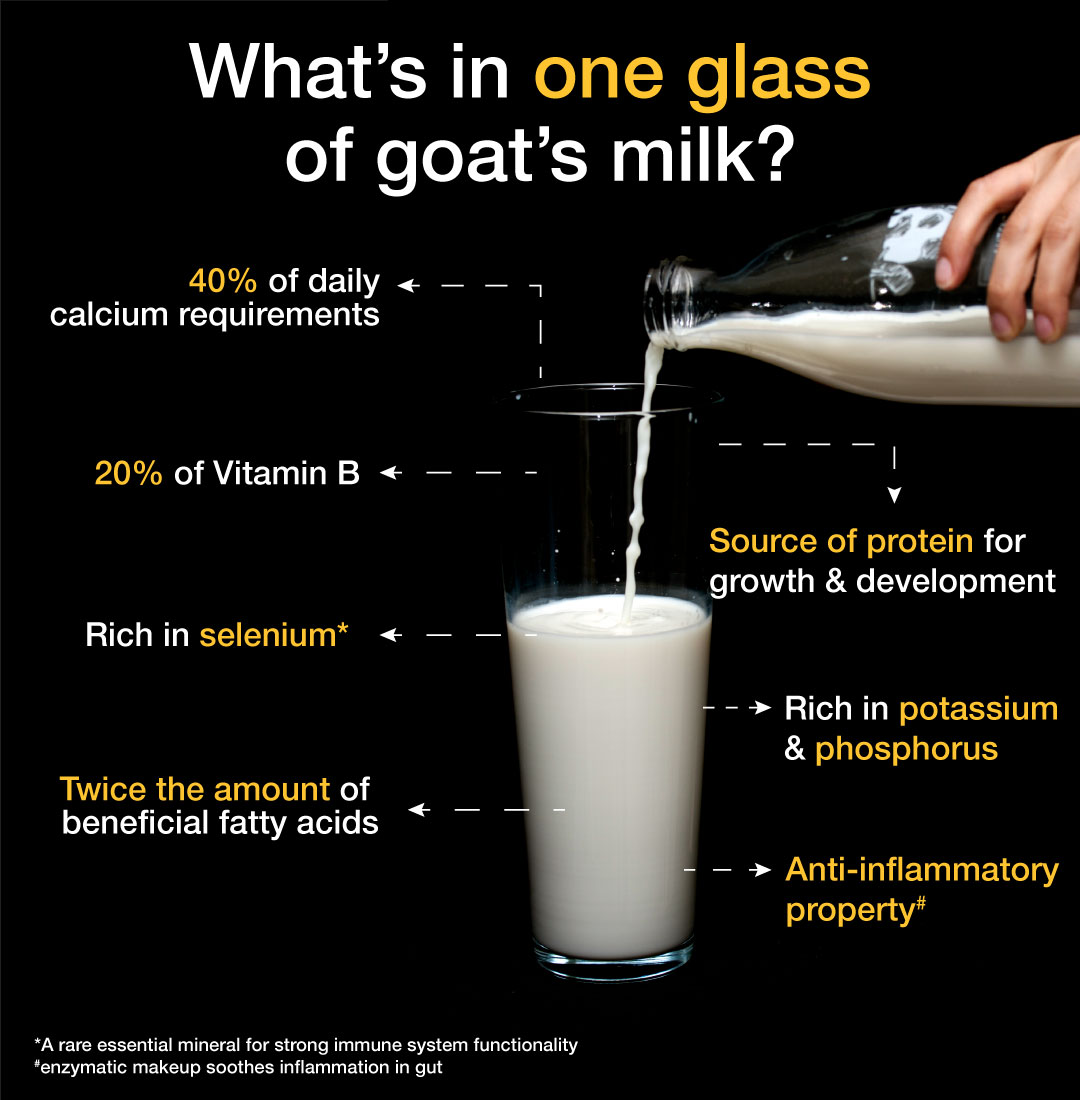
References:
1Taurine a valuable component of goat milk
2Comparative Protein Composition Analysis of Goat Milk
3American Academy of Paediatrics (AAP) recommendations for breastfeeding
4Goats’ Milk Is More Beneficial To Health Than Cows’ Milk, Study Suggests

The World Health Organisation (WHO) and the American Academy of Paediatrics (AAP) recommend exclusive breastfeeding for the first 6 months after birth, followed by the introduction of nutritionally adequate and safe complementary (solid) foods at 6 months together with continued breastfeeding up to 2 years of age or beyond.1
Formula feeding is a safe option to supplement low milk supply or when you have decided to start weaning your little ones. While all infant formulas are nutritionally complete and balanced, goat’s milk formula stands out as a popular choice amongst parents as it is easily digestible, less allergenic and boasts additional health benefits.
Impressive Health Benefits of Goat’s Milk
#1: More Nutrition In A Single Cup
Goat’s milk formula gains the upper hand over other dairy-based infant formulas when it comes to natural nutrition as it is a nutrient-dense food (providing more nutrition without having to drink a lot of it). Goat’s milk contains three times more bio-actives than cow’s milk, reducing the need to add synthetic supplementation. A particular amino acid, Taurine, is especially rich in goat’s milk, amounting to 20 times more than that of cow’s milk.2
A single glass of goat’s milk contains:3
#2: Naturally Easier To Digest
Milk allergy is often triggered by the presence of allergenic casein protein, ∝s1-casein, and goat’s milk is known to be ‘gentler on the tummy’ as it naturally contains lower levels of ∝s1-casein. The casein micelles in goat’s milk are also 40% larger than those from cow’s milk, creating more porous curds for the digestive enzymes to aid in more efficient digestion of goat’s milk protein.4 These unique properties in goat’s milk give it a digestive edge over other dairy-based formulas.

#3: Enhances Iron Absorption
Iron is a key nutrient that is essential for toddlers and children to support their rapid growth and brain development. All babies have enough iron stored in their bodies to last for the first six months. Beyond that, an adequate supply of iron is required which cannot be obtained from breast milk alone, and the AAP recommends iron-fortified infant formulas for all infants who are not breastfed or who are partially breastfed up to the age of 1.5
Goat’s milk formula is a preferred choice for children as it is rich in iron bioavailability – meaning it can be absorbed and utilised by the body. A research study in the Journal of Dairy Science found that not only does goat’s milk increase the body’s ability to absorb and use both calcium and iron, but it also does this better and faster than cow milk.6 Goat’s milk infant formula also has higher contents of vitamin A and C which aids the absorption of iron to meet your child’s growing nutritional and developmental needs.
Any Recommended Goat’s Milk Formula in Singapore?
For parents who are looking to introduce goat’s milk into your child’s diet, it is recommended to choose a formula that has zero GMO ingredients, such as New Zealand’s Karihome® Goat Milk Formula. All Karihome® infant formulas are made with 100% whole goat’s milk, sourced from 72 dedicated farms around New Zealand and processed in an ISO 9001 certified factory, where stringent quality checks are made from the collection of milk on-farm to manufacturing and packaging to offer nutritionally complete and safe products for infants and toddlers.
Powdered goat’s milk formula is the preferred choice for toddlers and children as it contains natural ingredients like MCFA, Sn2-PA and vitamins (A, D, E, K). To preserve its natural nutrients and benefits, fresh goat’s milk is spray-dried at a low temperature to reduce damage to nutrients. Additionally, their formula milk is enriched with DHA, EPA, AA and other minerals and vitamins that are formulated to meet the nutritional needs of growing toddlers and young children.
Natural Nutrition For All Ages
Karihome® also carries a whole range of formulas that have been specially fortified with added nutrients to meet the nutritional needs of infants, toddlers and children, so you won’t have to worry about transitioning between brands when your child reaches a certain age. Supplementing your child’s diet with Karihome® Goat Milk Formula gives you peace of mind knowing that your little one is getting a wholesome blend of essential nutrients without the side effects of a milk protein sensitivity.
References:
1WHO recommendations for Breastfeeding
2Taurine a valuable component of goat milk
3Goat Milk Benefits Are Superior to Cow Milk
4Comparative Protein Composition Analysis of Goat Milk
5American Academy of Paediatrics (AAP) recommendations for breastfeeding
6Goats’ Milk Is More Beneficial To Health Than Cows’ Milk, Study Suggests


Image Credit: www.everydayhealth.com
Say no to sweeteners!
Imagine being able to enjoy a fizzy soda and ice cream with none of the calories! This is the attractiveness of sugar-free food. While a regular can of cola can set you back by 128 calories, its sugar-free alternative contains almost zero calories, easing your guilty conscience when you have a sweet tooth.
Sounds too good to be true? That’s because it probably is. When packaged food and drinks carry the ‘Sugar-Free’ label, it means that there is no sugar in the product, but the sugar is likely to be replaced by artificial sweeteners or sugar alcohols.
Did You Know?
Artificial sweeteners and sugar alcohols are chemically manufactured molecules, which means they do not exist in nature. They are hundreds to thousands times sweeter than regular sugar, so a small dose does the same job of delivering sweetness in place of sugar.
Over the years, many studies have been done to assess the health risks associated with long-term use of artificial sweeteners, but they remained relatively new in the market as they did not exist until 40 years ago. This lack of research and evidence is a good reason to proceed with caution and limit intake of these chemically-created sweeteners.

But Aren’t They Labelled ‘Healthier Choice’ In Supermarkets?
The ‘Healthier Choice’ label is issued to food items that are healthier as compared to their counterparts. This is why the label can even be seen on ice cream, soft drinks and frozen french fries.
Some manufacturers tend to leverage on these ‘healthier choice’ labels by using artificial sweeteners or sugar alcohols to cut down on sugar levels while some really cut sugar without having any replacements and additives for the reduction. Hence it is important that as consumers to read the labels and pick those REAL healthier choices for your love ones in the family and avoid mistaking them to be healthy for regular consumption.
People also tend to consume greater quantities of foods which they believe to be healthy, and may overconsume ‘Healthier Choice’-labelled items which may lead to higher calorie intake. They also tend to rationalize ‘sugar-free/zero/light’ alternatives as an excuse to enjoy these treats on a daily basis, which may be more detrimental to their health as compared to foods without the label.

Image Credit: Hungry for change
Learn To Read Ingredient Labels
Artificial sweeteners and sugar alcohols are essentially chemicals, and these non-nutritive sweeteners may condition palates to crave for sweets and sugar, which contributes to unnecessary sugar intake and poor eating habits.
The presence of constant artificial sweeteners may also alter your taste for food, as your taste buds are constantly overstimulated, which can make you shun naturally sweet foods like fruits over time as you crave for more artificially-flavoured foods which are intensely sweeter.
The long-term health effects of artificial sweeteners and sugar alcohols have been hotly debated in recent years, with several studies claiming that excessive consumption may result in health problems like obesity, diabetes and heart diseases. It is best to learn how to identify and avoid these 3 common sweeteners.

Sucralose (Artificial Sweeteners)
Found in: Soft drinks, baking products and jams.
About 400-700 times sweeter than sugar and the most heat-stable of the lot, sucralose is widely used in baked foods and pastries. It offers energy but almost no nutritional benefits.
While authorities have claimed that sucralose is safe to eat, some studies have linked it to health problems. In 2012, an independent Italian laboratory announced a study that found a possible link between sucralose and leukaemia in mice. Until the study can be reviewed further, it is recommended to be consumed sparingly.
Maltitol (Sugar Alcohol)
Found in: Cultured milk (Yakult Acelight), Baking products
Maltitol is processed form sugar maltose and has a very similar taste and mouthfeel as regular sugar. It is 90% as sweet as sugar with almost half the calories.
The main problem with sugar alcohols like Maltitol is that it wreaks havoc on your digestive system, especially when consumed in large amounts. Sugar alcohols can produce abdominal gas, bloating and diarrhoea in some individuals because they cannot be completely absorbed by the body and are fermented by bacteria in the large intestines.
The Ministry of Health, Singapore advises the public to be cautious in regards to excessive sugar alcohol consumption. According to a statement by Health Promotion Board, consumers are warned that “consuming sugar alcohols in large amounts can have laxative effects or cause other gastric symptoms.”
https://www.healthhub.sg/programmes/77/sweet-talk-sugars-and-sweeteners
High-Fructose Corn Syrup (HFCS)
Found in: Soda, cereals
A much cheaper alternative to sucrose and it gives products a longer shelf life, hence more packaged foods contain HFCS, especially daily staples like cereals.
Some studies claim that beverages sweetened with HFCS contribute to obesity more than sucrose, as it is easily converted to fat when consumed in large quantities.
Choose ‘Less Sugar’ Over ‘Sugar-Free/Zero/Light’
For overall health, regular sugar may actually turn out to be the healthier choice than its chemically-derived alternative and can be worked into any healthy diet, as long as it is consumed in moderation.
Cultured drinks like VITAGEN Less Sugar, is specially formulated to contain 50% less sugar than other regular cultured milk drinks, without any nasties like Maltitol (a sugar alcohol that might affect digestive system). Even with 50% less sugar, it still tastes 100% satisfying because it is also made with real fruit juice.
Avoid sugary drinks that contain sucralose (soft drinks) which may cause gastrointestinal issues, but instead opt for healthier choices like VITAGEN Less Sugar, the only cultured milk drink to contain both Prebiotics and Probiotics that help maintain a healthy digestive system. Every bottle has billions of live probiotic cultures (Lactobacillus acidophilus & Lactobacillus casei) from Chr. Hansen Denmark.
Enjoy a delicious drink with the added benefit of probiotics to restore the balance of friendly bacteria in your gut, which can help to alleviate digestive problems caused by hidden sweeteners/sugar substitutes in everyday food.
VITAGEN Less Sugar Cultured Milk
5 x 125ml ($3.20)
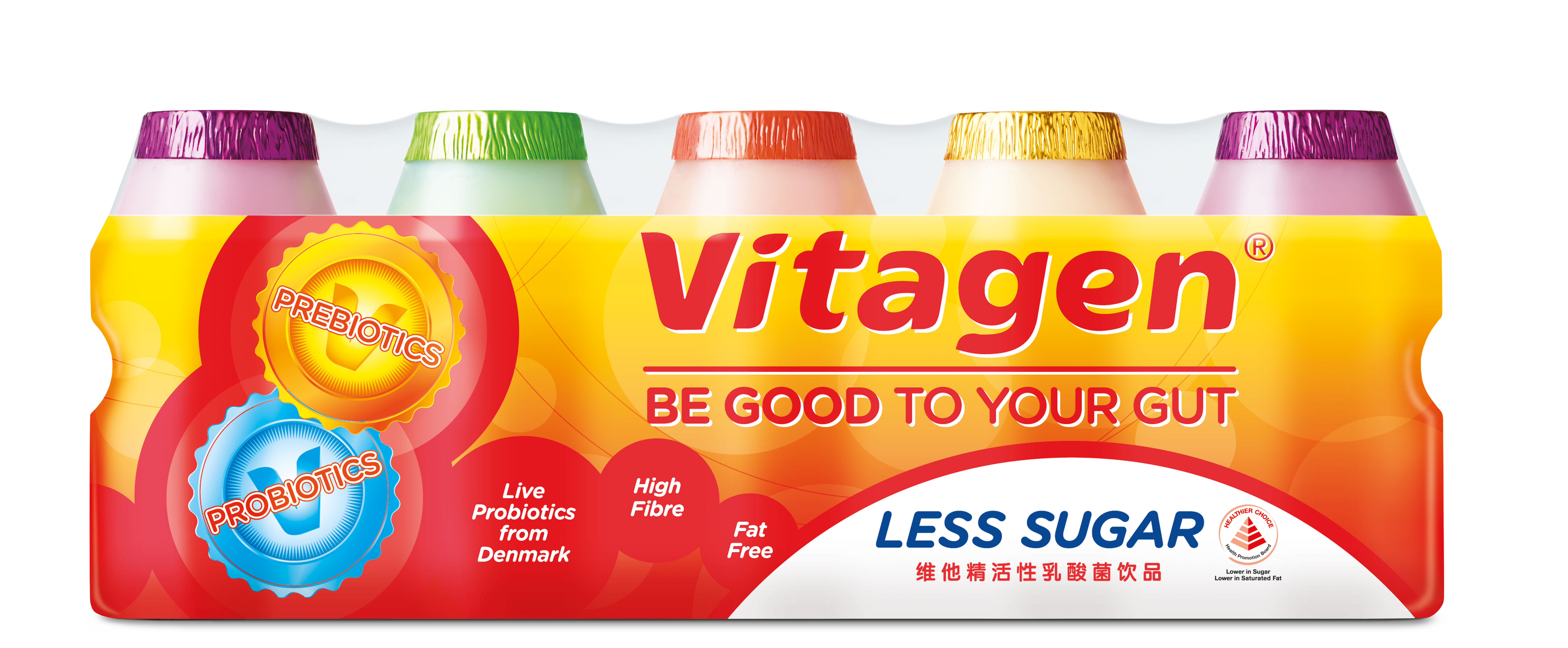
VITAGEN Collagen Less Sugar Cultured Milk
5 x 125ml ($4.00)
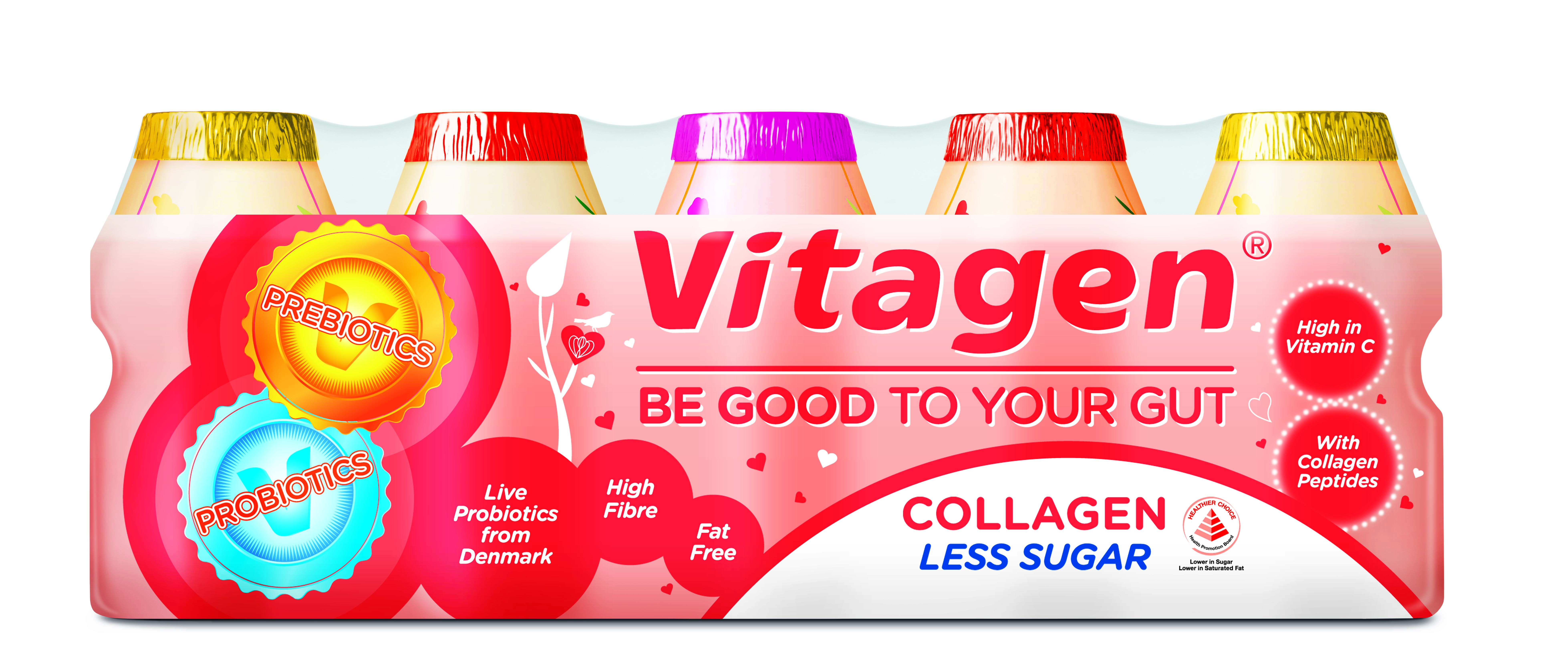
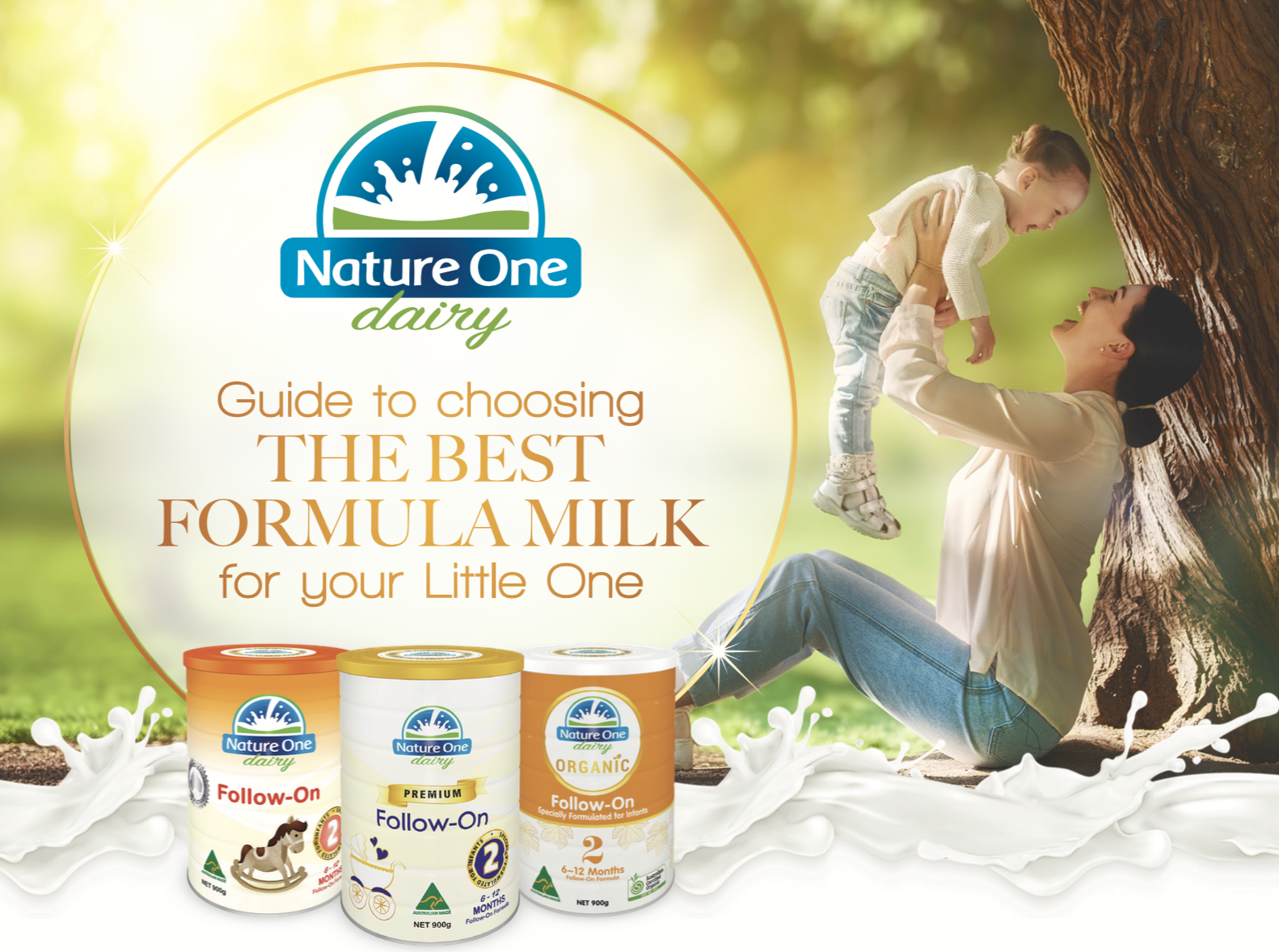
Guide to choosing the best formula milk for your little one.


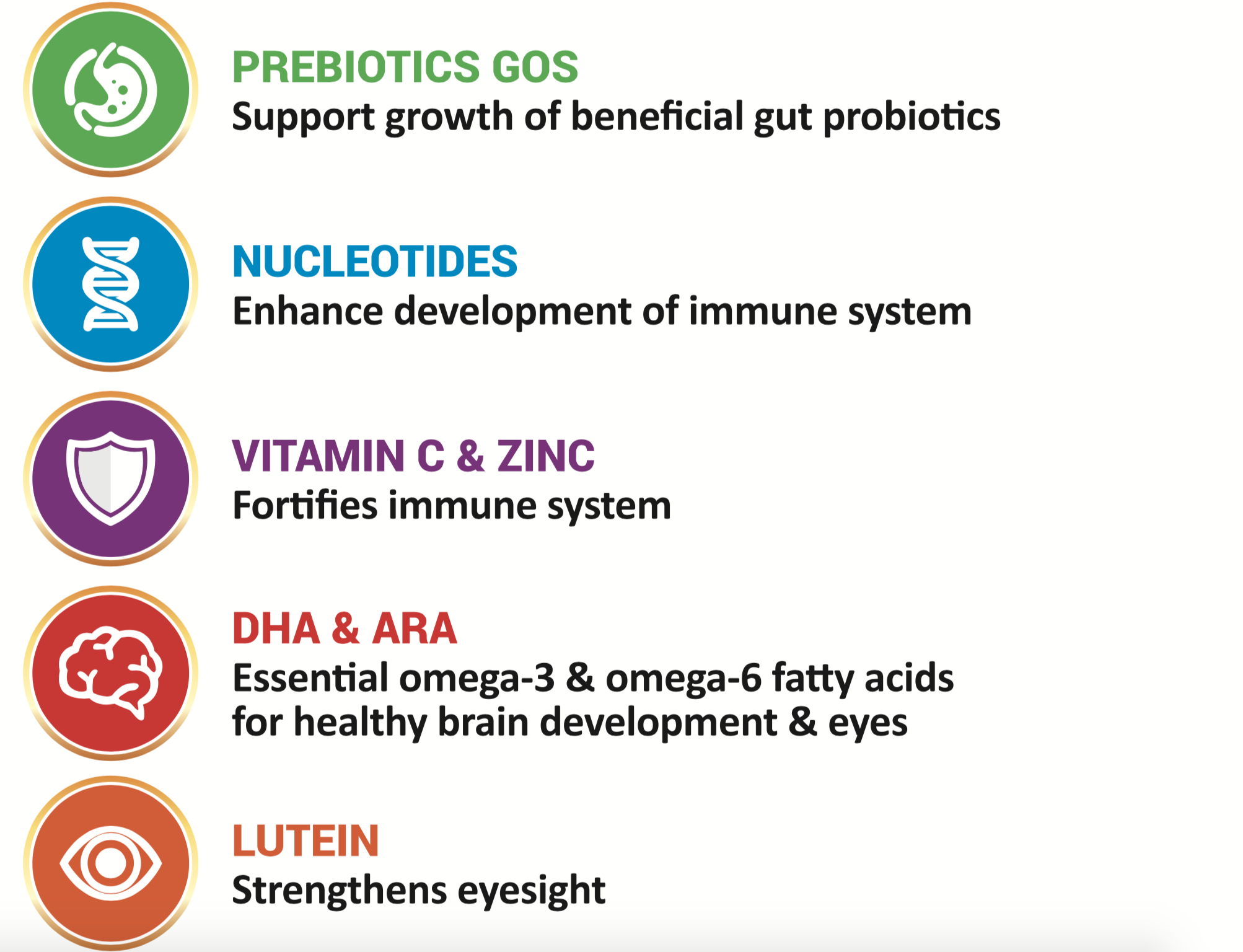
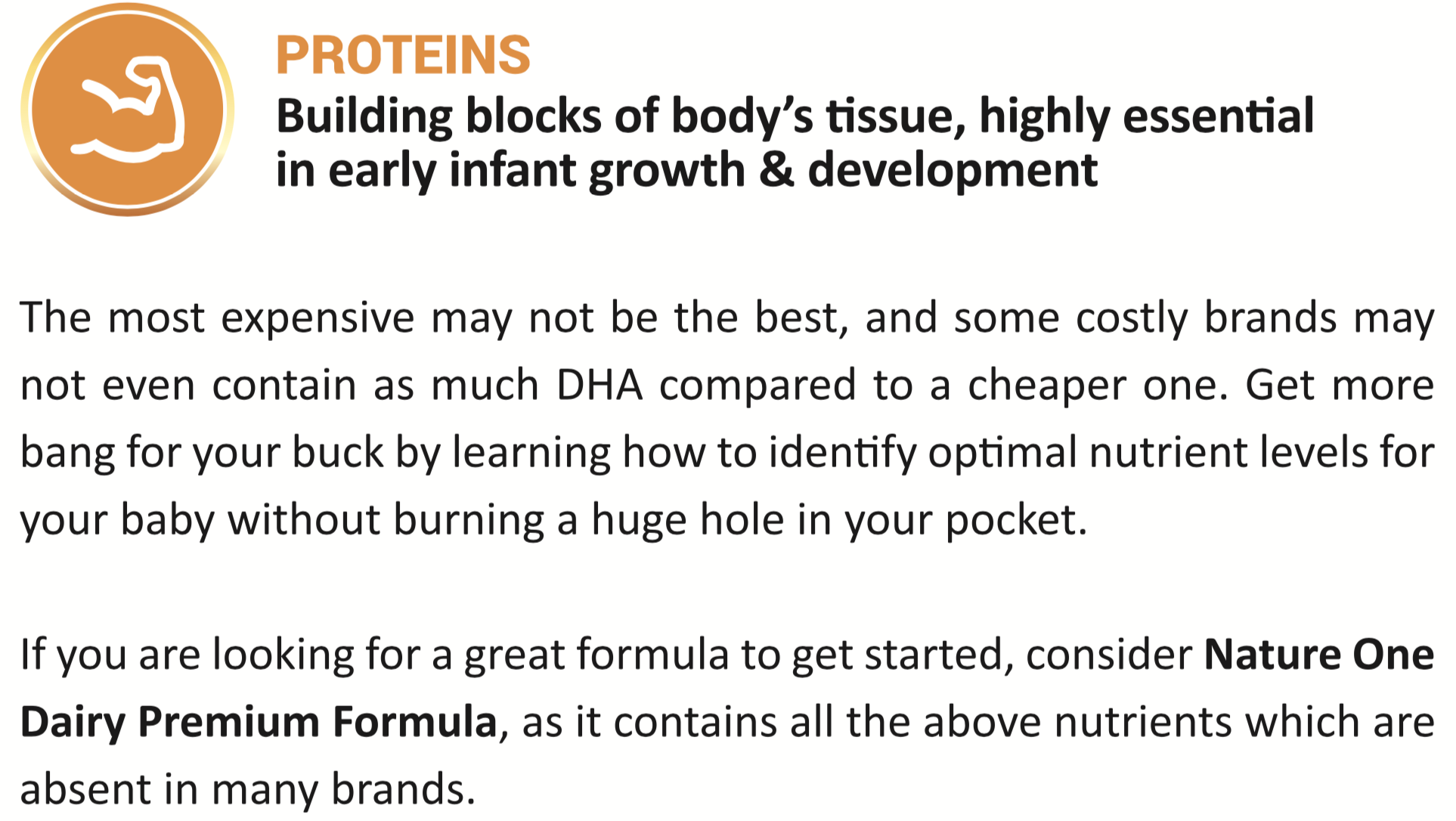
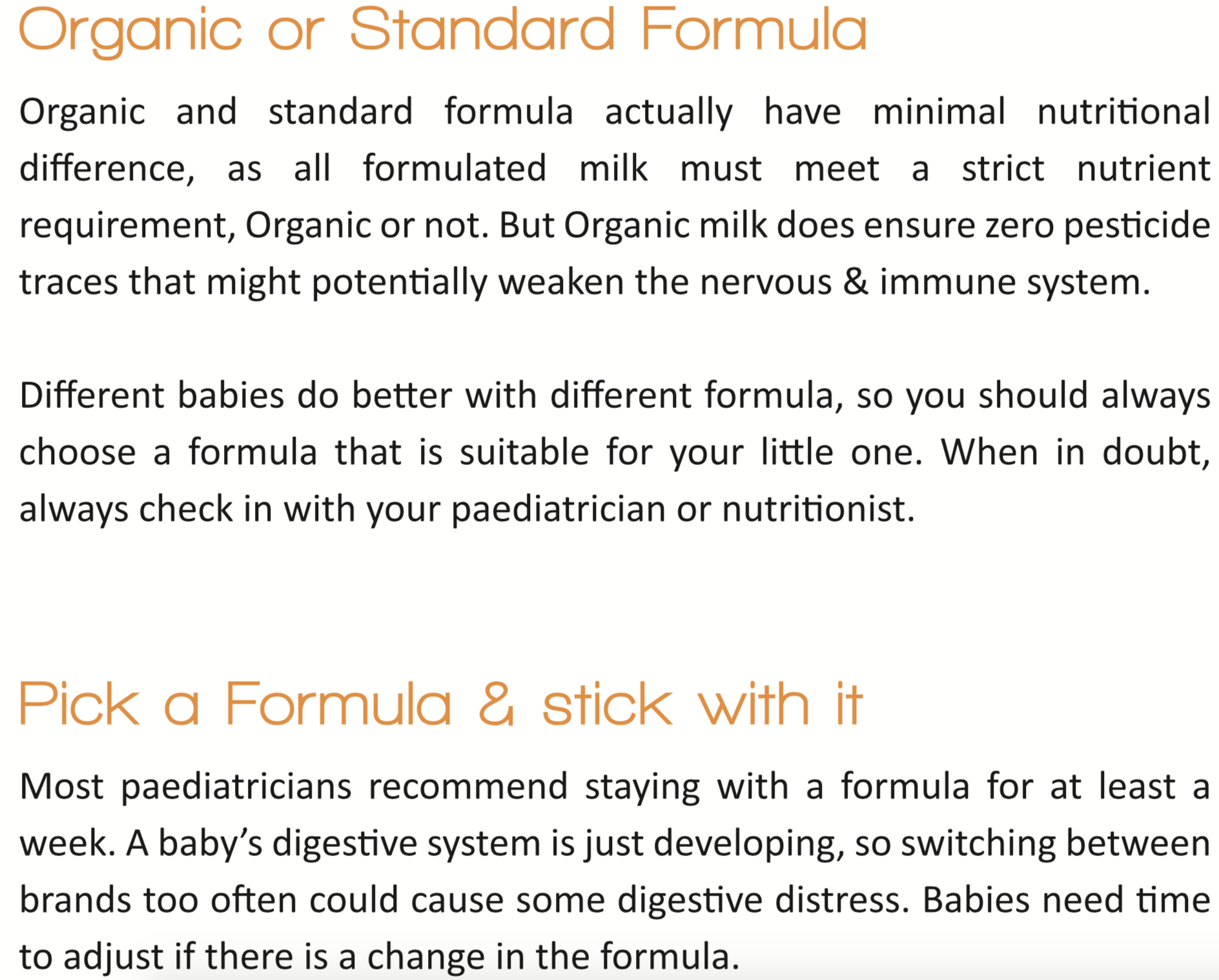




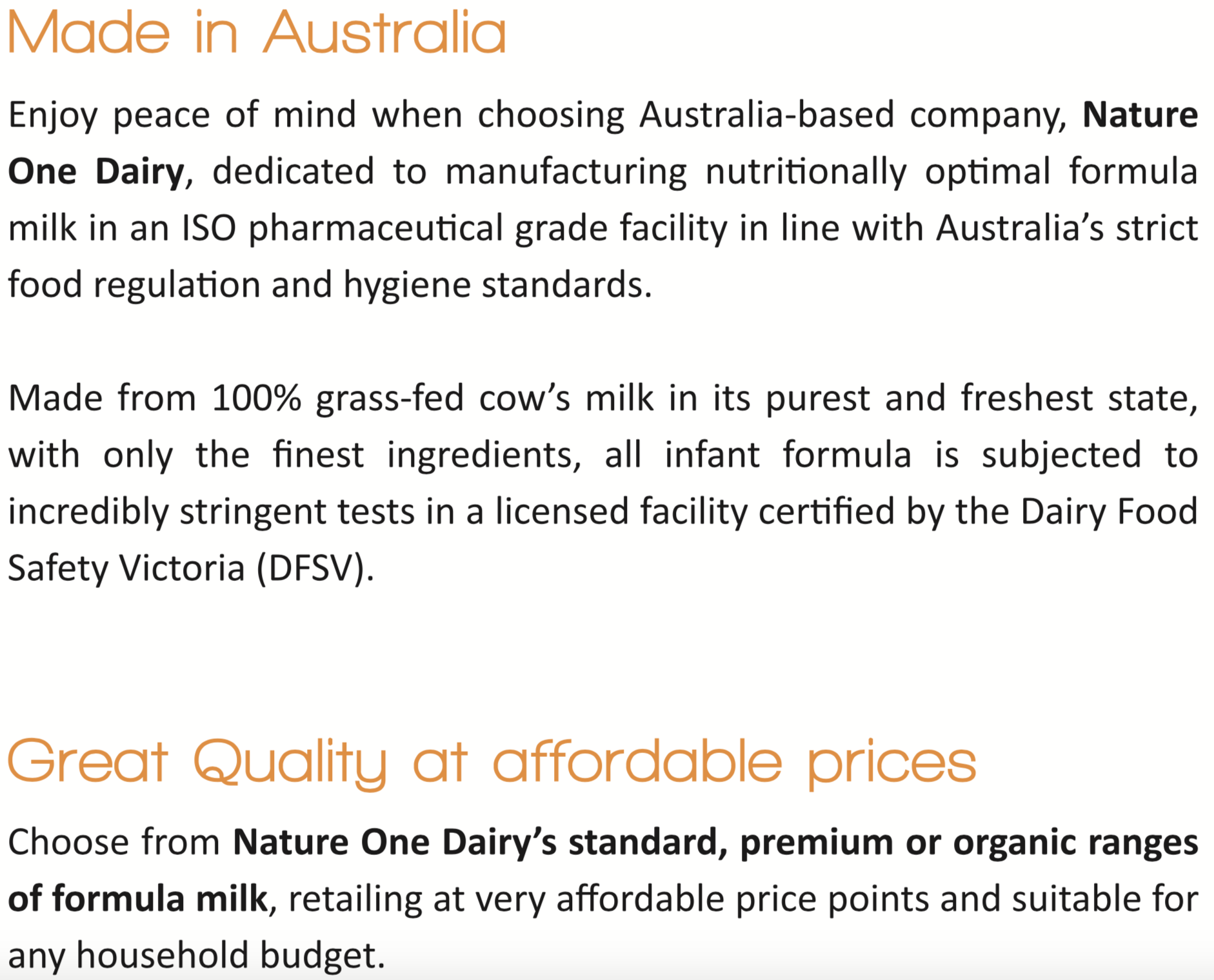
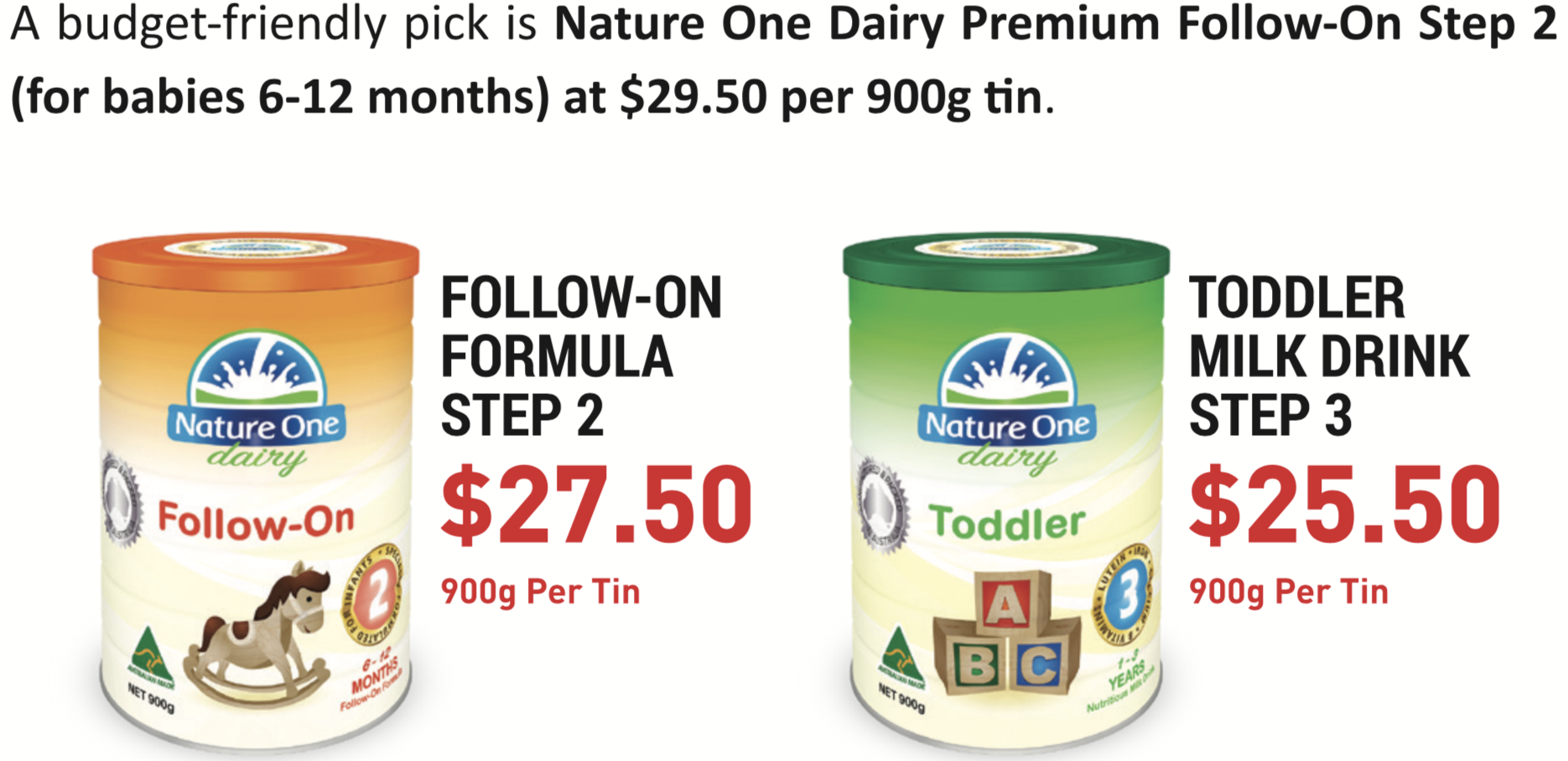

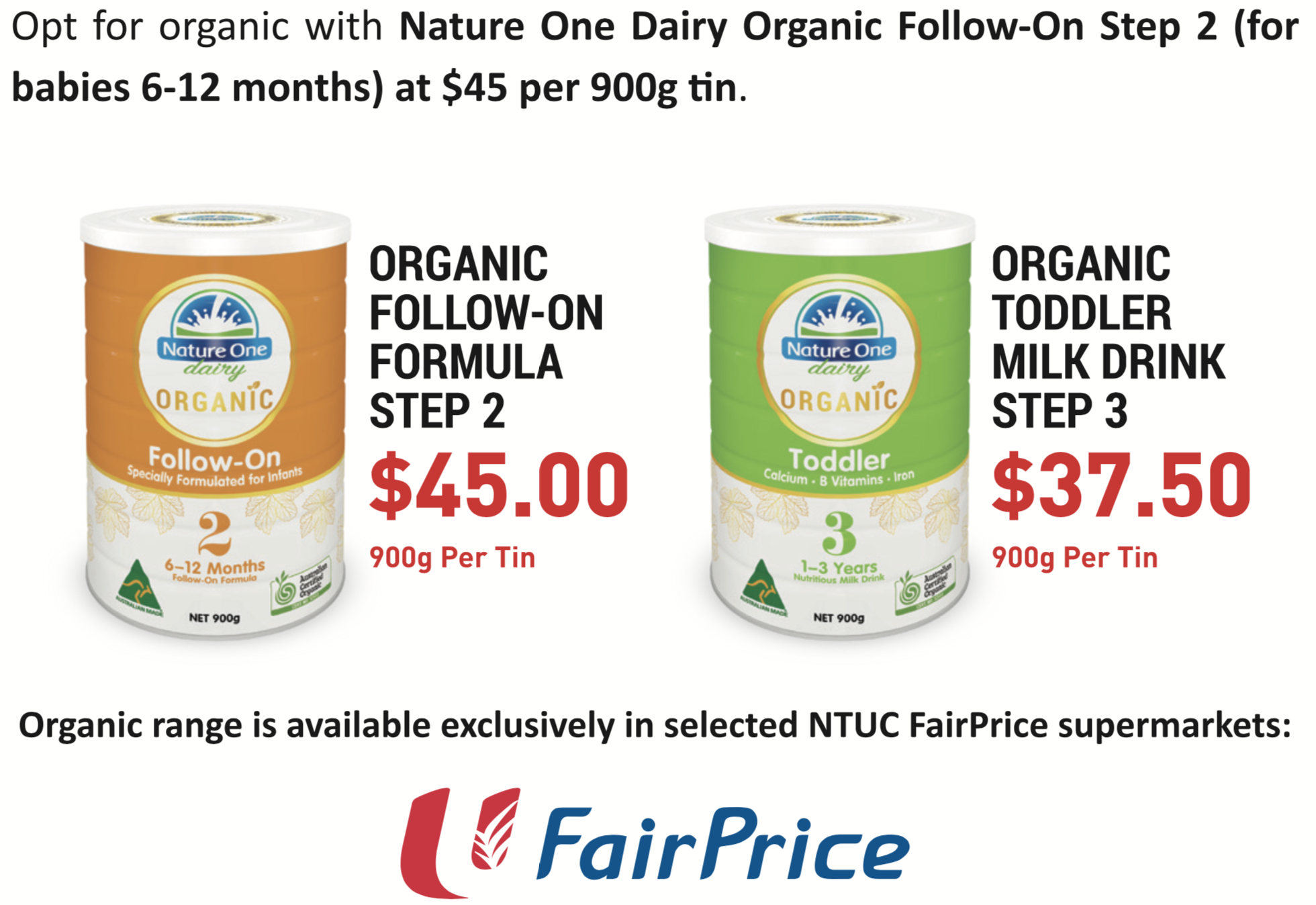


There is no single widely accepted definition of fussy eating. It is commonly understood as some sort of challenge during feeding because the child only eats a limited amount of food, has strong food preferences, has restricted intake and/or is unwilling to try new food.
Parents generally panic as they tend to worry that their child may not be getting enough nutrition and will hinder their growth.
Why do children exhibit such behaviour?
Majority of young fussy eaters exhibit refusal for food as they are experiencing ways to assert their independence or to gain attention from their parents and caregivers as they grow up. While such instances are very common in children, it is important to understand why a child is reacting negatively towards food, especially in their toddler and preschool years.
Dr Martha Liu, Paediatrician, SBCC Baby & Child Clinic, said: “Factors such as parental practices/feeding styles, including parental control, pressure to eat, social influences, personality factors, underlying medical condition and others may contribute to the development of picky eating.”
Symptoms which show that your child is most probably a fussy eater:
“Whether or not children outgrow this phase on their own depends on each individual child. If a child is purely a fussy eater without any underlying medical or behavioural condition, she/he has a good chance of outgrowing this phase. If a child has underlying medical or behavioural condition, I would suggest that parents seek consultation from a paediatrician on this,” explained Dr Liu.
While it can be to parents’ favour if their child insists on only eating a certain type of food, it is recommended to offer new food together with the food that your child likes and encourage him/her to try the new food first.
How to prevent children from becoming fussy eaters?
There is no definite method to prevent children from becoming fussy eaters but there are some standards parents can put in place as a routine to possibly help reduce the chances of it:
What should toddlers/pre-schoolers eat to ensure they have a varied / balanced diet?
Children at different stages of life have different needs. As toddlers are still at the stage of rapidly growing and being extremely active, they may require more calories and nutrients.
Suggestions to help ensure that your child has a balanced diet:
Examples of feeding misconceptions that parents may have:
1. Misconception: “Healthy meals have to be ‘proper’ meals consisting of rice.”
Alternatives: Carbohydrates such as noodles, pasta, potatoes, bread can be consumed instead of rice.
2. Misconception: “Healthy meals have to be cooked without adding any oil.”
Alternatives: As long as heathy oil is used, such as olive, canola, rice bran, sunflower, sesame, peanut, corn, parents can add oil to pan-fry or stir-fry foods rather than boiling everything in a soup.
3. Misconception: “Fruit juice is just as nutritious as fresh fruit.”
Alternatives: For children above 1 year of age, 100% fruit juice can be given as ½ of the fruit recommendations, but it is still best to give fresh fruit as it contains fibre. Fibre is important for regular bowel movements, and also for satiety and weight control. Excessive juice consumption is also associated with diarrhoea, flatulence, abdominal distention, tooth decay and metabolic disease.

Dr Martha Liu
Paediatrician
SBCC Baby & Child Clinic
This article is brought to you by Healthway Medical.

While there is a common perception that all babies and children should be round and chubby, parents may find that their child’s weight appear to be decreasing or stagnant at some stages of growth.
A way for parents to keep track of their child’s weight is to refer to the charts in their child’s health booklet which can serve as a benchmark. Key symptoms to look out for is any sudden weight loss, if the child belongs to the less than 3rd percentile category, and if there is a sudden fall on the weight percentile chart.
If you are concerned that your child might be underweight, consult your paediatrician.
Assuming that the child has no underlying medical concerns that require treatment, the main goal will be to provide the child with adequate nutrition to gain some weight and achieve the ideal weight. This nutritional therapy often entails getting your child to take in more calories.
What should my child consume?
Parents should include foods that are high caloric and nutrient dense as part of their child’s diet as these foods are rich in important vitamins, minerals, and proteins. Avoid falling into the trap of serving ‘junk’ foods, or foods with empty calories such as soft drinks, candy, chips, and fast foods.
A varied, well balanced diet is the key to your child's weight gain and healthy development. Such diet should contain foods from the four main food groups as follows:
The below table will serve as a sample of what are some of the high caloric food choices from the above food groups:
|
Food group |
Food choices and application |
|
Grains
|
Brown rice
Bread
Pancakes (whole-meal or white flour based)
|
|
Carbohydrates |
Potato and sweet potato
Pasta
|
|
Fruits and vegetables
|
Banana
Avocado
Dried fruits e.g. raisins, cranberries
|
|
Protein |
Eggs
Nut butter (e.g. peanut)
*Avoid if there are any concerns over nut allergy, and avoid those butters with chunky nuts in view of the risk of choking Meats
|
|
Dairy |
Full cream milk
Whole milk yoghurt
Cheese e.g. Cheddar, Swiss, Mozzarella
Cream cheese
|
|
Fats
|
Oils e.g. Canola, Olive, Coconut oil
Butter
|
|
Sweeteners |
Honey
*Avoid feeding toddlers who are less than a year old |
At times, a consultation with your paediatrician may suggest a referral to a dietician. The dietician will be able to advise and work with you to develop an customised feeding plan that meets the needs of both your child and the family.
How often should my child eat?
Young children have naturally smaller tummies and therefore unable to eat a large amount of food in one sitting. As such, apart from your child's three main meals, your child will require two or three snacks during the day. It is important to structure the meals and snacks evenly in order to avoid constant eating and drinking throughout the day, and to help ensure that every bite your child takes count!
Are nutritional supplements recommended?
If your child is a fussy eater and refuses to add the above recommended food to his/her diet or adapt to the changes, your paediatrician may recommend a high-caloric milk formula, or supplement in a drink form to be taken as a snack. In some cases, the paediatrician may recommend a multivitamin and mineral supplement instead.
Developing a healthy attitude to food is key!
It can be a stressful process helping your child to achieve the recommended weight but parents ought to always remember help them guide their child into developing a healthy attitude to food. Eating should still be a fun and happy part of the day!
Some suggestions for parents is to cultivate the habit of siting down as a family and to have meals together and take your time with mealtimes with no rush so that your child can enjoy the food and company. Parents can also try to engage the child in meal planning, grocery shopping, and food preparation to encourage his or her overall interest in food and eating. A food diary can also come in handy to keep track of what the child’s food intake is.

Dr Tan Zhen Han
Paediatrician
SBCC Baby & Child Clinic
MBBS (S’pore), MRCPCH (UK), FAMS (Paediatrics)
.jpg)
While heavy exercise during pregnancy is a big no-no, more women are now turning to prenatal yoga as a viable alternative because of its numerous benefits, from staying in shape to ensuring the safety of their unborn child.
Yoga is a centuries-old ritual of physical, mental and spiritual practices that originated in India as early as the fifth and sixth centuries BC. While there is a broad variety of yoga types, they share similar paths in that some of them involve mastery of the mind and senses and others focus on cultivating one’s energy or chakras (spiritual powers). Ultimately, yoga consists of eight core disciplines that encompass: achieving a state of higher consciousness; meditation; concentration; breath control; universal ethics; self-conduct; physical postures; as well as control of one’s senses.

Because most of these aims are especially useful to women who have conceived, this has naturally kindled interest in yoga and its practical use during pregnancy. Generally, prenatal yoga is made up of a combination of breathing, pacing, and posing (asana) exercises which helps mothers-to-be physically and emotionally prepare for labour and birth. Some women also believe that practising yoga will help reduce complications during their pregnancy and also aid in the discovery of her own inner strength to enable a smoother and more relaxed birthing experience.
Benefits of prenatal yoga
Prenatal yoga poses are essentially gentle, low-impact methods of keeping a woman’s changing body active and supple. Depending on which stage of the pregnancy she is in, prenatal yoga may even help minimise common problems such as morning sickness and constipation. Yoga can also help facilitate easier labour and a smoother delivery by relieving tension around the cervix and birth canal and by opening the pelvis.
Prenatal yoga also offers other key advantages specific to pregnant women. It allows them to stay fit and flexible, helps to regulate breathing, strengthens the muscles and pelvic floor, improves blood circulation, eliminates the problem of cramps, as well as relieves stress, which cumulatively keep women focussed and healthy before labour and birth. When performed throughout the duration of your pregnancy, yoga will allow your muscles to relax—especially in the cervix and birth canal regions.
All these plus points are in addition to the multiple health benefits that have boosted the popularity of yoga in the general population, and not just pregnant women in particular. As a holistic lifestyle activity and form of exercise, yoga has been shown to lower blood pressure, improve sleep and digestion, strengthen muscles and joints, and increase overall flexibility. Yoga also helps remove impurities from the body through the breath, sweat, liver, kidneys, and digestive system. People who practise yoga regularly report that they feel less stressed and healthier.
Continue reading on the next page...
The breathing exercises and improvement of muscle flexibility are the most beneficial to a pregnant woman and that is the primary focus of prenatal yoga exercises. When done correctly, such movements will gently stretch the woman’s muscles without overexertion, and will help relieve pressure and tension on the ligaments that are normally stretched and pulled from carrying the weight of the growing baby. Yoga poses will also stretch muscles around the hips, lower back and hamstring area which reduces lower back pain and ensures proper body alignment during pregnancy. Women who experience constipation and indigestion as their baby grows may also benefit as some poses can improve the regular digestive flow.

Consistent asana practice enhances blood and oxygen circulation which further helps in the reduction of swelling and inflammation around such joints as the wrists and ankles. These benefits will endure even at the post-pregnancy stage, when a mother needs to retain optimal energy and stamina levels to take care of her new born child.
Hormonal changes during pregnancy will usually trigger mood swings, morning sickness and other aches and pains which can be highly distressing to a woman’s body and mind. During active labour, she may become uptight and anxious, which can make the pain feel more intense. Some women may resort to holding their breaths or even hyperventilate when they start feeling stressed. Prenatal yoga is thus beneficial as the different breathing techniques will relax your body and relieve stress and tension. Regulating breathing can make a great difference to how labour pain is distinguished: as intense waves or mild and controllable cramps. Although it might be challenging to consciously recall these techniques when you are actively undergoing labour, it is definitely a useful coping method to fall back on if you practise your breathing frequently and regularly before your big due date. So make it worth your while now that you can!
Continue reading on the next page...
What to expect
The first trimester is when women will experience major changes to their bodies. If you are considering taking up yoga, now is a good time to start and if you are already practising it, it is recommended that you continue. Although prenatal yoga is beneficial in multiple ways and is generally considered safe and non-taxing to mother and baby, as with all forms of exercise, it is advised that you first consult your ob-gyn before you embark on any sessions. This applies to whether you are a yoga newbie, or are already experienced doing such exercise.
Next, it is advised that you seek out a reputable organisation or facility that specialises in, or offers yoga classes conducted by a trained and certified yoga practitioner. It’s even better if the classes are specifically designed for pregnant clients, as the exercises will be even more relevant and tailored for your body’s condition. Working out in similar company will also ensure your motivation and enthusiasm levels remain high and helps create a comfort zone for yourself to confidently make progress throughout the different stages of your pregnancy.
During the second trimester, the baby inside you will start growing faster and at a steady rate, so harnessing yoga will help you learn how to shift your centre of gravity to accommodate your growing belly. Some women need more time adjusting to the sensation, so the breathing and posture exercises through yoga will definitely be helpful as they pay attention to their legs and abdominal muscles. Focussing on leg muscles is important as through regular toning, your legs will become strong enough to bear your growing weight especially during the last few weeks of your pregnancy.
Continue reading on the next page...
Points to ponder
According to yoga trainer Andrea Fox, who is also the owner and operator of Shanti Yoga Center, when approaching prenatal yoga, “lying on the front is inappropriate. Strong back bends are to be avoided, as are postures that involve using the tummy muscles strongly, such as the boat pose or supine leg rising. Any posture involving balance should be tackled with great care.”
Here are other considerations to take note of when you begin a yoga routine:
Continue reading on the next page...
Vitality for mind and body
Some poses that are useful from the second trimester onwards of your pregnancy include:
1. Standing side stretch pose: It helps the legs and arms stretch in an upward and outward direction from the belly at the same time.
2. Standing spread leg forward bend: This pose helps improve spine curvature and strengthens inner and back legs. Those suffering from lower back problems can use a prop chair to stretch your arms out for support.
3. Seated forward bend (Paschimothanasana): Stretches the hamstrings, shoulders and spine to relieve stress while enhancing concentration and body posture.
4. Spread leg forward fold (Upavista Konasana): Helps work the hamstrings and adductors (muscles that draw a body part toward the body’s midline).
5. Hero pose (Virasana): Is especially helpful for those with flat feet as it strengthens the foot’s arches and ankles while enhancing posture.
6. Mountain pose (Tadasana): Helps correct your posture, strengthen thighs, ankles and feet. Also tones abdominal muscles.
7. Warrior pose: Stretches and strengthens muscles in the arms and legs, leading to improved balance and body alignment, relief from backache.
8. Triangle pose (trikonasana): “Opens” the hips and shoulders, stretches the legs and creates overall balance.
Besides these self-administered manipulations to the body, the mind is not left out either as meditation is very much an integral element of yoga. Meditation is an ideal way to develop a calm mindset which is necessary during pregnancy as the mental state of the mother-to-be will have a positive influence over the development of the growing foetus.
In yoga, meditation involves the incorporation of breathing exercises which provide more oxygen to the baby in the womb while creating emotional and mental wellness to control any mood swings. Including yoga music also helps create an atmosphere of peace and tranquillity, which helps blanket the mother with a sense of soothing spirituality as she does her exercises. In this way, she can gain the most out of prenatal yoga therapy when the time spent is totally devoted to the workout and devoid of any sources of stress.
Always remember that committing to a yoga regime during your pregnancy should not feel like a tedious chore. Think of it as a complementary measure to vitalise your health and well-being. There will undoubtedly be days where you feel more alert and energetic to fulfil your exercises; and there will be times when you feel tired or less motivated. This is entirely normal and since yoga is about being attuned to your body, make sure that you take a break or slow down accordingly during those days when you feel somewhat “off”. The foremost priority is to keep you and your baby safe by avoiding any unnecessary exertion... and equally important, have fun, relax and enjoy the journey!
Continue reading on the next page...
Aqua Yoga: “Wat-er” Sensation!

Aqua yoga takes the principles and movements of yoga and adapts them to the environment of water. This series of yoga exercises for the water was developed by Françoise Barbira Freedman, a medical anthropologist and affiliate lecturer at the University of Cambridge who is also a trained yoga teacher and therapist.
Pregnant women enjoy more freedom of movement and a sense of weightlessness when they are immersed in water. Flexibility and mobility are increased, while breathing and circulation improve. It is thought that the movements practised in the last few weeks of pregnancy may even encourage the baby to settle into a favourable position ready for birth.
With the release of gravity in water, the body is able to reap the benefits of classical yoga postures which can be accomplished without undue strain. However, the exercises are still effective as the water provides sufficient resistance for the muscles to work against. Aqua yoga offers the perfect combination of benefits of both yoga and swimming. No previous yoga experience is necessary, and it can be practised by swimmers and non-swimmers alike.
If you like this article, share it with your friends!

Image credit: Time.com
Congrats, you are pregnant! The first question that’s propping up in your mind is how much more you would need to eat to ensure that your baby is well. Contrary to the popular belief (myth actually!), you do not need to ‘eat for two.’
Your baby is around the size of a pea during the first trimester and you’re gobbling down food, assuming it’s the best thing you’re doing for your baby – NOT! There are a few simple diet rules you need to follow during different stages of your pregnancy.
As miraculous as it may be, there’s actually a lot of math (and science for that matter) involved in pregnancy nutrition. Thanks to all the focus on weight loss, the foods that we consume today are valued in terms of calories. Of course, this depends on your physical activity and your state of health.
Obviously, these ‘calories’ aren’t available just like that, so you may need to concentrate on the food you’re taking to ensure that you’re taking the right form of calories.
To make sure you include the right form of calories required in pregnancy diet, here we’ve bought you a list of foods you can add to your daily meals.
They are a rich source of important vitamins and minerals that your baby needs to develop during the pregnancy period. Choose from apples, bananas, oranges, grapes and other fruits.
You may need to get all the calcium you can during this crucial stage of development. Consuming milk and milk products is a better option as opposed to supplemental forms of calcium.
Lean meats and pulses are excellent sources of proteins, and are a must during pregnancy.
Add more of green leafy veggies to ensure you get lots of iron - this helps prevent anaemia during pregnancy.
Fruits and veggies, when taken in their raw form, are the best for a pregnancy diet since they are healthy and contain loads of fiber. These keep your digestive system properly functioning and prevent constipation, which is common during pregnancy.
It is a good idea to create a diet chart for your meals and stick to that during your pregnancy period. Seek opinion from a certified medical professional and get a nutritionist to create a tailor-made diet plan for you as per your requirements.
Subscribe to our mailing list and LIKE US on Facebook to receive more tips and insights on pregnancy and parenting!

While some fish can be great for your heart health, some are rich in mercury. Some fishes have DHA, which makes it ideal for your baby in the womb while some have toxic PCBs in it. Hence it is important for you to know which fish to consume and which ones to avoid.
The FDA or Food and Drug Administration agency has stated that a pregnant mother can eat up to 12 ounces of fish each week. This is because it offers numerous benefits such as:
Never avoid the consumption of the fish in your pregnancy diet as it is rich in health benefits for you and the baby. If you are trying to get pregnant or already pregnant, you can consume the following types of fish in the amount mentioned below:

You must control the amount of tuna fish while you are pregnant as it contains mercury in it. Make sure you have just two tuna steaks (140 g after cooking) in a week. Fresh is always preferred over the can variety.
Pregnant women must eat oily fish in moderate amounts as it might contain several pollutants like PCBs and dioxins. Eat only two portions of these fish per week, but eat them without fail. Include oily fish variants like herring, sardines, salmon, trout, pilchards and mackerel in your diet.
The following fish types are good for pregnant women, but due to the fact they may have swum through tainted waters, you must eat only two portions or less of them in a week.
Some of you might be wondering whether it is safe to consume shellfish like oyster or even crab during your pregnancy. It is highly recommended you avoid raw shellfish at this time, as it would have contamination of virus, bacteria or other toxins, which is not safe for your baby.

However, eating cooked shellfish is advisable, as the contaminants would be killed when the shellfish is cooked thoroughly. However, you can avoid it altogether if you are not sure about consuming it. You must also avoid the following varieties of shellfish as it can trigger food poisoning risks. They are:
You should practice discretion and good sense while opting to eat seafood during pregnancy. Whichever fish you eat, make sure it is cleaned and cooked thoroughly to avoid digestive issues or other, more serious, complications to you or your baby. Have a safe pregnancy!
Subscribe to our mailing list and LIKE US on Facebook to receive more tips and insights on pregnancy and parenting!
Article written by Dhivya
Copyrighted Pregnancy & Baby by Mummys Market 2019


